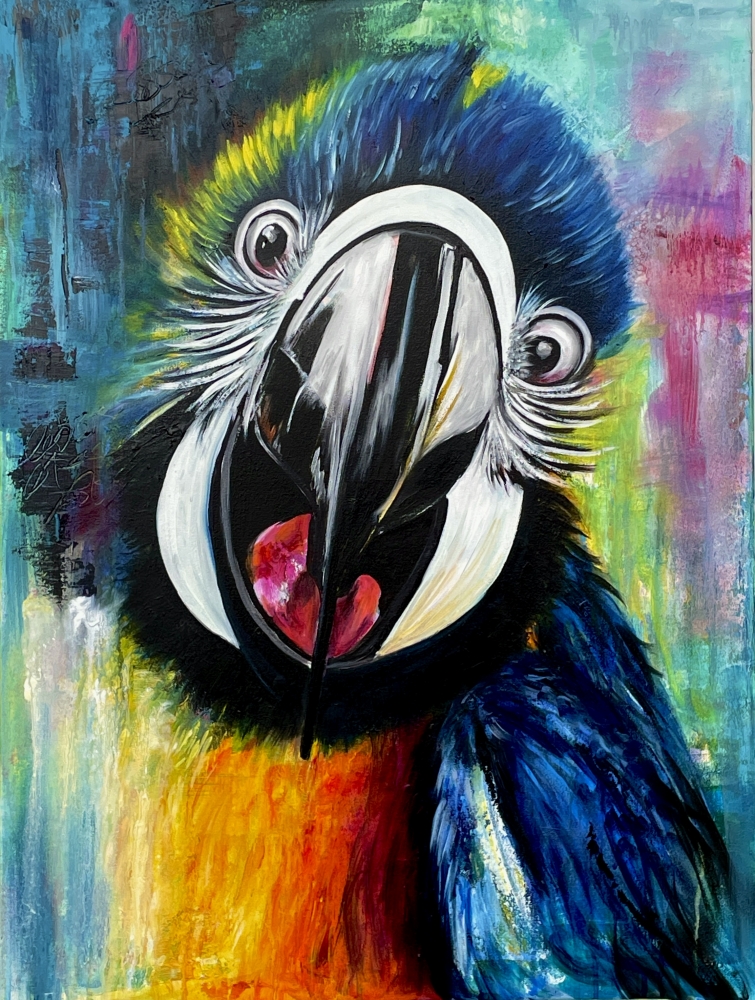In the landscape of modern art, animals have maintained a significant presence, continuing a tradition that stretches back to prehistoric cave paintings. One notable example is the rock art paintings of the Singida region, Tanzania, which serve as a fascinating contrast to modern depictions of animals. Today, the portrayal of animals in art has evolved, becoming more varied and complex, reflecting contemporary issues, personal narratives, and innovative artistic techniques.
Symbolism and metaphor
Animals in modern art often serve as powerful symbols and metaphors. Artists use them to explore themes such as identity, freedom, and the human connection to nature. For instance, Damien Hirst's iconic shark, preserved in formaldehyde and titled "The Physical Impossibility of Death in the Mind of Someone Living," confronts viewers with their own mortality and the nature of life and death. Hirst's work exemplifies how animals can provoke deep philosophical questions and emotional responses.
Environmental and ethical commentary
The current environmental crisis and ethical concerns regarding animal rights have inspired many contemporary artists. Olafur Eliasson, known for his installations and sculptures that often incorporate natural elements, uses animals to comment on climate change and environmental degradation. His work "Your Waste of Time," which features blocks of ice from Icelandic glaciers, indirectly alludes to the habitat loss faced by many animal species due to global warming.
 Ooo Kinky. Samantha Biddle
Ooo Kinky. Samantha Biddle
Similarly, artists like Sue Coe have dedicated their work to exposing the cruelty of factory farming and advocating for animal rights. Coe's graphic and impactful illustrations, such as those in her book "Cruel," are designed to raise awareness and spark activism against animal cruelty.
Anthropomorphism and humanization
Anthropomorphism, the attribution of human traits to animals, remains a popular theme in modern art. This technique is used to reflect on human nature and societal issues. Yoshitomo Nara's whimsical yet unsettling paintings of human-like animals convey a sense of innocence juxtaposed with underlying darkness, often reflecting societal pressures and the loss of innocence.
The works of Jeff Koons also stand out in this regard. His balloon dog sculptures, while playful and approachable, invite deeper contemplation on consumerism, artifice, and the commodification of everyday objects and experiences.
Technological integration and innovation
Modern technology has expanded the ways artists can depict and incorporate animals in their work. Digital art, video installations, and even virtual reality (VR) experiences have opened new realms for artistic exploration. Artists like Petra Cortright use digital mediums to create ethereal and dynamic images of animals that challenge traditional perceptions and aesthetics.
VR artist Jakob Kudsk Steensen creates immersive experiences that allow viewers to enter virtual ecosystems, providing an intimate and interactive understanding of animal habitats. His work "Re-Animated" resurrects the extinct Kauai ʻōʻō bird in a digital environment, blending art, technology, and ecological education.
Personal narratives and emotional connections
For many artists, animals hold personal significance and emotional connections, which they express through their work. Kiki Smith, for example, frequently incorporates animals into her sculptures, drawings, and prints. Her work often explores themes of birth, growth, and transformation, with animals symbolizing various stages and aspects of life.
Similarly, Walton Ford’s large-scale watercolors are meticulous recreations of animals in the style of 19th-century naturalist illustrations, but with a twist. His works often incorporate historical references and dark humor, commenting on colonialism, industrialization, and the impact of human activities on wildlife.
In conclusion, animals in modern art are far more than mere subjects; they are symbols, metaphors, and messengers. Through their depictions, contemporary artists engage with critical issues, challenge perceptions, and evoke deep emotional responses. As the world continues to grapple with environmental and ethical dilemmas, the presence of animals in art serves as a poignant reminder of our interconnectedness with the natural world and the need to preserve it.
 Ooo Kinky. Samantha Biddle
Ooo Kinky. Samantha Biddle